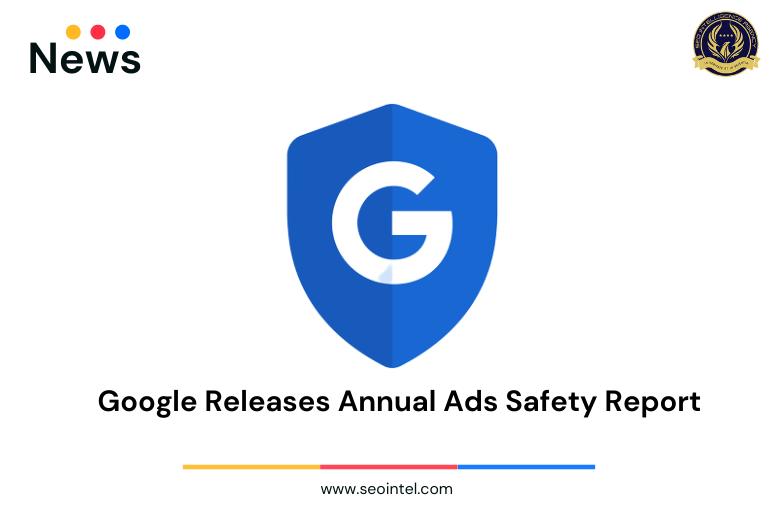
Google released an annual report on its efforts to protect ad systems from unauthorized use.
Google’s 2021 annual report highlights efforts in user safety, several eliminated and banned ads, suspension of ads accounts, and more.
In a blog post by the VP of Product Management, Ads Privacy and Safety of Goole, Scott Spencer, he said that when it comes to advertising and monetized content, user safety is at the top of their priority list.
“Thousands of Googlers work around the clock to prevent malicious use of our advertising services and help make them safer for people, businesses, and publishers. We do this important work because an ad-supported internet means everyone can access essential information.” Spencer said.
Spencer said that over 3.4 billion advertisements were eliminated, 5.7 billion ads were banned, and 5.6 million advertiser accounts were suspended in 2021. He mentioned that they conducted broader site-level enforcement action on about 63,000 publisher sites, blocking or restricting ad serving on 1.7 billion publisher pages.
Although the report only covers the year 2021, Spencer mentioned an update on their response to the situation in Ukraine, which is on the minds of many people throughout the world, including law enforcement employees. He said that they moved immediately to implement a sensitive event that barred advertisers from benefiting from or manipulating the situation. This is in addition to their long-standing principles forbidding the use of their services to commercialize content that incites violence or denies the occurrence of catastrophic events.
Google also took several other steps to halt the majority of their commercial activities in Russia across all of our products, including halting the display of ads in Russia and ads from Russian-based advertisers, as well as halting the monetization of Russian state-funded media across all of our platforms.
“So far, we’ve blocked over eight million ads related to the war in Ukraine under our sensitive event policy and separately removed ads from more than 60 state-funded media sites across our platforms,” Spencer said.
Google also suspended numerous advertiser accounts.
“As we shared in our 2020 report, we’ve seen an increase in fraudulent activity during the pandemic. In 2021, we continued to see bad actors operate with more sophistication and at a greater scale, using a variety of tactics to evade our detection. This included creating thousands of accounts simultaneously and using techniques like cloaking and text manipulation to show our reviewers and systems different ad content than they’d show a user — making that content more difficult to detect and enforce against.”
Google said they are continuing to use a multi-pronged approach to tackle this conduct, such as authenticating advertisers’ identities and leveraging signals in our network to identify coordinated activity between accounts. In over 180 countries, they actively verify advertisements. If an advertiser does not complete their verification program when required, their account will be suspended automatically.
This combination of measures has allowed us to match the size of their opponents and more effectively eliminate several accounts affiliated with a single bad actor at the same time. As a result, between 2020 and 2021, they increased the amount of account-level bans for advertisers.
Spencer said they increased their policing of untrustworthy content in 2021. More than 500,000 pages were prohibited from running ads that violated Google’s policies against damaging health claims relating to COVID-19 and false claims that could undermine trust and election participation. They also announced a new Unreliable Claims policy on climate change late last year, which excludes anything that defies well-established scientific consensus on the phenomenon’s existence and causes.
“We’ve stayed focused on preventing abuse in ads related to COVID-19, which was especially important in 2021 for claims related to vaccines, testing, and price-gouging for critical supplies like masks. Since the beginning of the pandemic, we’ve blocked over 106 million ads related to COVID-19. And we supported local NGOs and governments with $250 million in Ad Grants to help connect people to accurate vaccine information.”
Furthermore, Google introduces new brand safety tools and resources for advertisers and publishers.
Google added a new capability to their advertising controls last year that allows brands to upload dynamic exclusion lists that can be updated and maintained automatically by trustworthy third parties. This allows advertisers to tap into the resources and experience of reputable organizations to better defend their brands and campaigns.
“We know that advertisers care about all the content on a page where their ads may run, including user-generated content (UGC) like comment sections. That’s why we hold publishers responsible for moderating these features. We’ve released several resources in the past year to help them do that — including an infographic and blog post, troubleshooters to solve UGC issues, and a video tutorial.”
Looking ahead to 2022, Google said they will continue to address areas of abuse across our platforms and network this year to safeguard users and assist reputable advertisers and publishers.
Moreover, the new “About this ad” feature is now available worldwide to assist people to understand why an ad was aired and who ran it. They can also complain about an ad if they believe it violates one of Google’s policies, or they can block ads they don’t want to see.